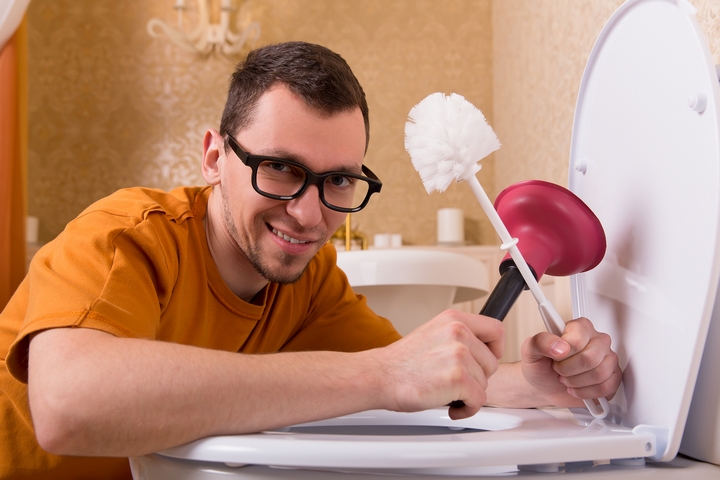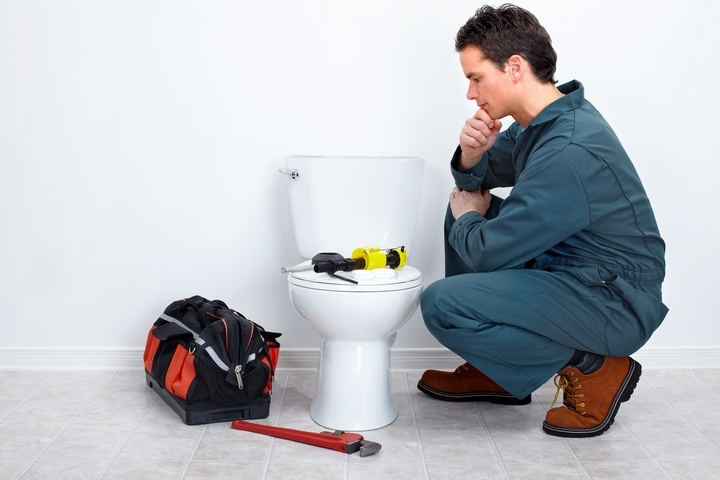
Plumbing issues often strike at the worst of times. Our day to day lives can be hectic enough on their own without the addition of a clogged pipe or blocked drain. Without the proper tools on hand, even a simple clog can become a serious nuisance. With a bit of research and some forward preparation, you can be ready to tackle a simple plumbing project or problem before a situation escalates and a plumber is required.
Building a simple do it yourself plumbers toolkit is a great way to be prepared to deal with problems as soon as they arise, as well as save you some money in the long term. There are many tools to choose from ranging from simple tools to complex devices, but we’ll focus on the essentials.
1.Various Plungers

The plumbing tool most commonly found in houses is the plunger, and for good reason too. A plunger is a simple tool that is used to dislodge clogs in sink drains, shower drains, and toilets. A common misconception about plungers, however, is that they’re effectively all the same. While its true that the main purpose of any single plunger is typically to dislodge a clog, there are different plungers for different types of drains.
The first plunger of note is the cup plunger. When someone thinks of a plunger, the image that comes to mind is likely that of the common cup plunger. Cup plungers are simple, typically they consist of a long wooden handle and a circular cup on the bottom, usually red. Cup plungers are designed to be used on flat surfaces, where the round cup is capable of making a seal in order to allow for pressure to build while plunging. This means that the cup plunger is most effective for sinks and tubs, or any other flat-surfaced drain.
Toilets are uneven at the bottom and require a slightly different design of plunger. The flange plunger is similar in design to the cup plunger, however, the flange plunger has an additional cup flap within the main cup in order to slide into uneven surfaces.
2. A Plumber’s Snake

Occasionally, a clog may be too difficult to remove with a simple plunger. When dealing with a particularly difficult clog, a plumber’s snake is usually the go-to tool. The plumber’s snake is a flexible long auger that is thin enough to be slid into various drains and pipes. Similarly to plungers, there are two different augers worth looking out for, the hand auger for drains, and the closet auger for toilets.
Plumber’s augers dislodge significant clogs by physically breaking up the clog and dislodging it directly rather than with pressure. As a result, an auger can handle far more difficult clogs than any plunger, and are an essential part of any home toolkit.
3. Plumber’s Putty

Aside from clogged drains, another common plumbing issue is leakage. Water leaks can be a costly problem, and when recognized, they should be eliminated as fast as possible. Preventing leakage before it occurs is the best possible practice, so during the process of altering or replacing your faucets and drains, it’s important to ensure that a watertight seal is in place.
Plumber’s Putty is a pliable substance designed to create a watertight seal around drains and faucets with as little hassle as possible. By heating the putty up, it becomes easily moulded. Plumbers putty is an extremely important tool when replacing faucets, as it can be easily placed beneath a new fixture to provide a watertight seal. When using plumber’s putty, it’s important to clean off all excess putty before it dries.
While many of these tools are commonly found in most households, understanding that there are differences between them is essential. With a healthy understanding of their unique characteristics, you’ll be ready to tackle most clogs and prevent leaks before they happen. If all else fails, remember that your local plumber is only a phone call away.


